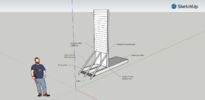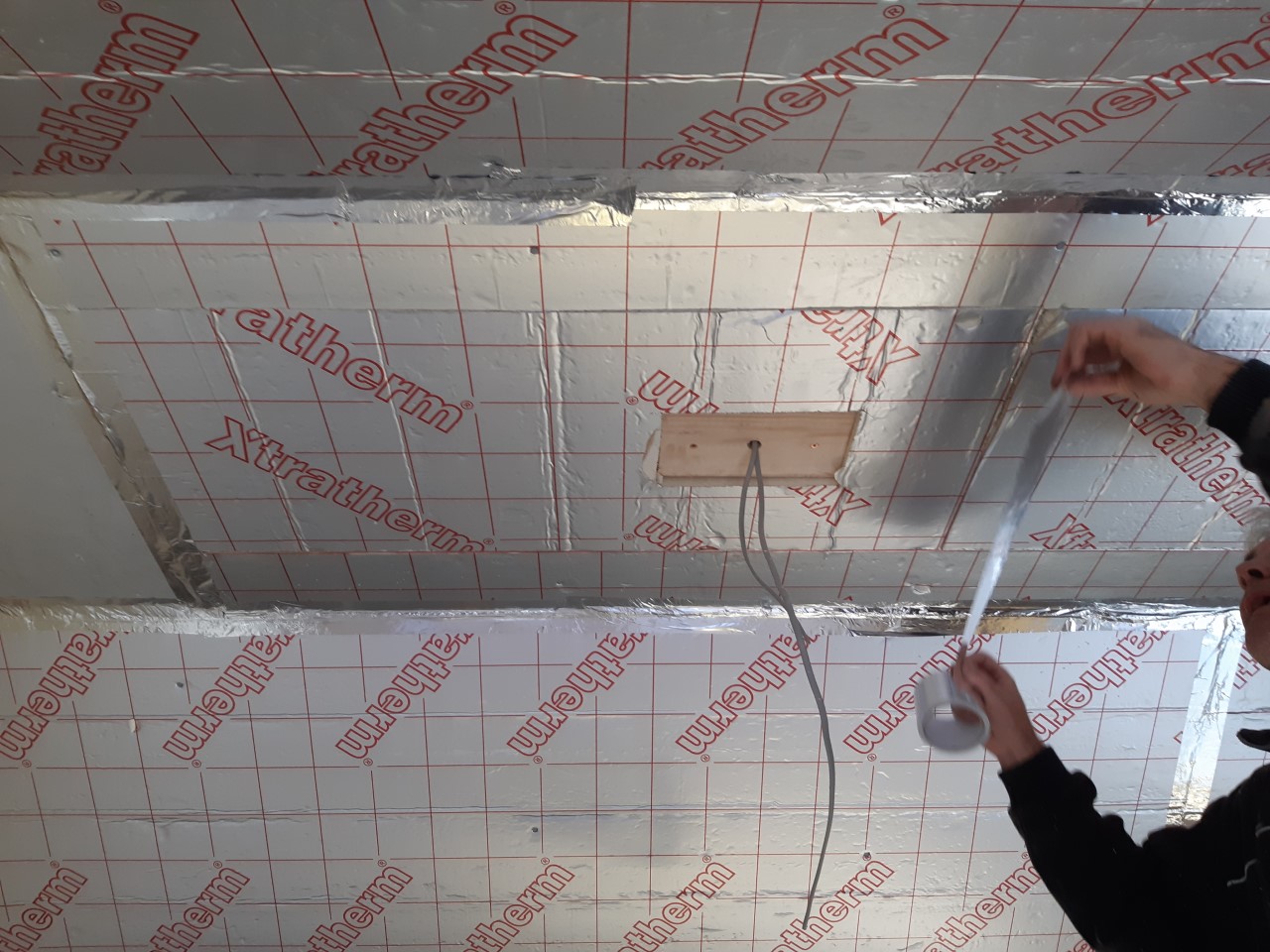Right, I will try to be brief but I really don't want to cause issues later with condensate and associated damage to timbers / mould etc. Competent DIY'er but just cautious. Photo attached for reference. Please excuse the primitive drawing, it's clearly not to scale!!
So we live in a two story dormer style semi-detached. Standard brick & tile construction with the roof pitch coming down to the top of first floor height. The question relates to our proposed project coming up to help reduce how cold the house is upstairs. We have combi boiler & radiator central heating (a newly installed system) which works very well but the house simply does not retain the heat. Having done some digging, I have established that the external dormer wall is of timber construction. It is made up of a layer of plasterboard, timber frame and then external UPVC cladding. No insulation and no vapor barrier (other than the foil backing of the plasterboard). The ceiling is a cold roof with plasterboard, timber framing, a layer of chipboard and felt on the flat roof of the bedroom. Also no insulation within the roof. The extra issue (where I think we loose A LOT of heat is the floor. It is timber joists with standard floor boards on the top and the bottom of the joists has the plasterboard for our kitchen below. The ends of the joists terminate behind the tiled pitch of the roof line and the void between the joists is completely free from any capping of any kind. This allows gales of air to flow from the front of the house to the back of the house. No insulation in the floor void.
My intention to solve the heat loss is as follows:
* Walls: Remove plasterboard from both external timber frame dormer wall and replace the inner facade plasterboard with insulated plasterboard panels. I would also like to fill the wall timber framing with mineral wool or indeed 'Kingspan' type foam boards as an additional attempt to retain some heat loss through the wall.
* Ceilings: Remove plasterboard (I need to do this anyway as the pitch of the roof has not been constructed out of the ceiling so is wonky and will affect our fitted wardrobes anticipated so I want to level it. Replace that plasterboard with insulated plasterboards.
* Floor: Install kingspan foam boards at the end sections of open floor joists effectively preventing the free flowing air and allowing this air to remain warmer for longer. When I pulled cables through last year for our cameras, I was able to touch the top surface of the soffit from within my bedroom having lifted the floor boards!? It explains why the floor is so cold even with carpet, it must be blowing a gale under there!
My concerns are the construction and risks of condensation in the walls, roof or floor. I cannot yet achieve the removal of the external cladding to fit any required vapor barrier or breathe membrane that I understand is used in construction now for the timber dormer wall or indeed remove the roof material to do something above. I can easily remove the roof tiles at the floor joist height to expose the ends of the joists though and I can easily remove and retrofit anything from inside so that is not an issue for me.
What are the risks? What would be the best 'order' of retrofitting the insulation (as an example, where should a plastic membrane be placed, onto the back of the cladding then insulate or between the insulated plasterboard and timber frame). Is there a risk of condensation anywhere? Will I be able to 'cap' the ends of the floor joist areas? Is there a risk for this? Its a minefield for me when it comes to the condensation risk but the house is SO COLD!! There must be something I can do?
So we live in a two story dormer style semi-detached. Standard brick & tile construction with the roof pitch coming down to the top of first floor height. The question relates to our proposed project coming up to help reduce how cold the house is upstairs. We have combi boiler & radiator central heating (a newly installed system) which works very well but the house simply does not retain the heat. Having done some digging, I have established that the external dormer wall is of timber construction. It is made up of a layer of plasterboard, timber frame and then external UPVC cladding. No insulation and no vapor barrier (other than the foil backing of the plasterboard). The ceiling is a cold roof with plasterboard, timber framing, a layer of chipboard and felt on the flat roof of the bedroom. Also no insulation within the roof. The extra issue (where I think we loose A LOT of heat is the floor. It is timber joists with standard floor boards on the top and the bottom of the joists has the plasterboard for our kitchen below. The ends of the joists terminate behind the tiled pitch of the roof line and the void between the joists is completely free from any capping of any kind. This allows gales of air to flow from the front of the house to the back of the house. No insulation in the floor void.
My intention to solve the heat loss is as follows:
* Walls: Remove plasterboard from both external timber frame dormer wall and replace the inner facade plasterboard with insulated plasterboard panels. I would also like to fill the wall timber framing with mineral wool or indeed 'Kingspan' type foam boards as an additional attempt to retain some heat loss through the wall.
* Ceilings: Remove plasterboard (I need to do this anyway as the pitch of the roof has not been constructed out of the ceiling so is wonky and will affect our fitted wardrobes anticipated so I want to level it. Replace that plasterboard with insulated plasterboards.
* Floor: Install kingspan foam boards at the end sections of open floor joists effectively preventing the free flowing air and allowing this air to remain warmer for longer. When I pulled cables through last year for our cameras, I was able to touch the top surface of the soffit from within my bedroom having lifted the floor boards!? It explains why the floor is so cold even with carpet, it must be blowing a gale under there!
My concerns are the construction and risks of condensation in the walls, roof or floor. I cannot yet achieve the removal of the external cladding to fit any required vapor barrier or breathe membrane that I understand is used in construction now for the timber dormer wall or indeed remove the roof material to do something above. I can easily remove the roof tiles at the floor joist height to expose the ends of the joists though and I can easily remove and retrofit anything from inside so that is not an issue for me.
What are the risks? What would be the best 'order' of retrofitting the insulation (as an example, where should a plastic membrane be placed, onto the back of the cladding then insulate or between the insulated plasterboard and timber frame). Is there a risk of condensation anywhere? Will I be able to 'cap' the ends of the floor joist areas? Is there a risk for this? Its a minefield for me when it comes to the condensation risk but the house is SO COLD!! There must be something I can do?






